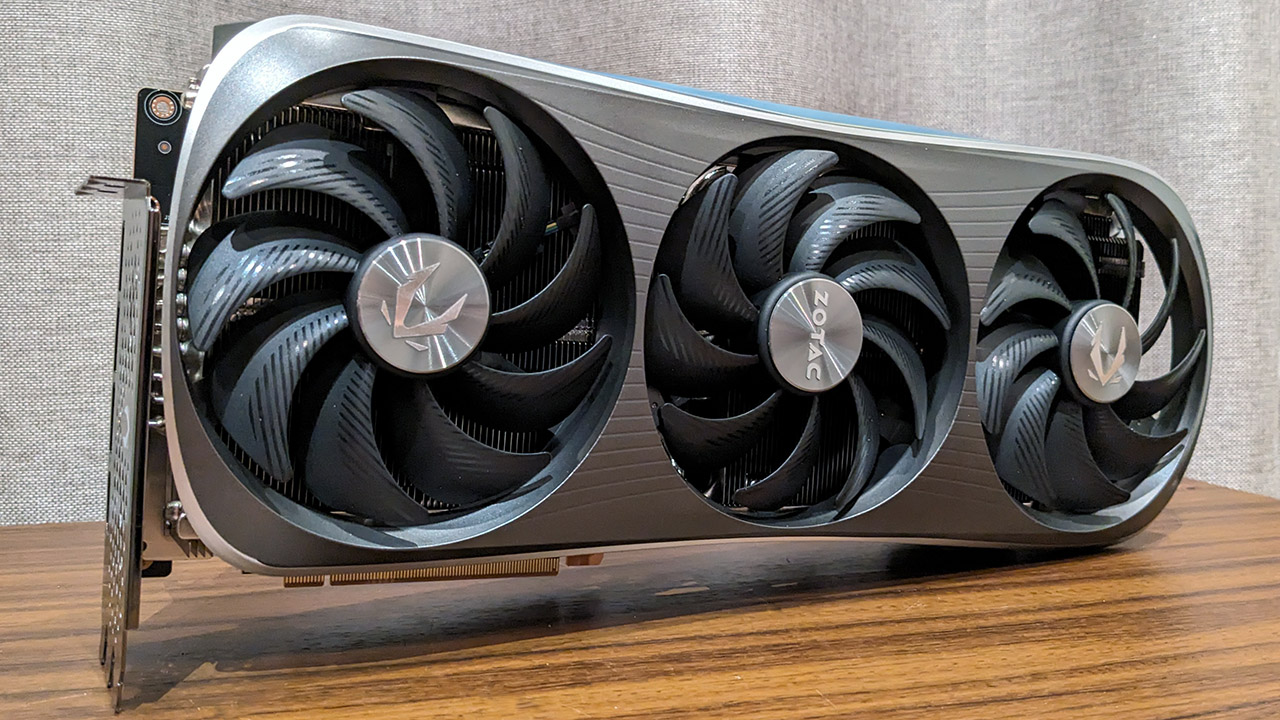Our Verdict
The RTX 4080 Super doesn't shock the high-end graphics market, but at this end of the range, the $100 premium of the Zotac Amp Extreme Airo is maybe an acceptable price to pay for a card with its capabilities.
For
- High boost clock
- Lovely RGB light bar
- A better RTX 4080, for less..
Against
- ..though it's still pretty much an RTX 4080
- And its still pricey
- Noise levels are a tad high
PC Gamer's got your back
Super January is drawing to a close and the Nvidia RTX 4080 Super is the last of the green team's Super cards to launch—for now anyway. Though it's easily the fastest of the three, it's arguably the least exciting, even if it's hard to complain about a card that's faster than its non-Super counterpart, while costing less.
Nvidia's late decision to delay the embargo of MSRP cards for a day means all RTX 4080 Super cards can be unveiled on the same day. Following on from Dave's review of the RTX 4080 Super Founders Edition comes my review of the tongue twistingly named Zotac Gaming GeForce RTX 4080 Super Amp Extreme Airo. It promises to be a little faster, a little cooler, and hopefully a little quieter than the Founders Edition, albeit more expensive at $1,099 versus the $999 price of the FE.
Before I get to the Zotac flavored RTX 4080 Super, I'll briefly cover what's under the hood.
The RTX 4080 Super contains a slightly faster variant of the AD103 GPU found in the RTX 4080 (and now the RTX 4070 Ti Super as well). But while the RTX 4070 Super received a relatively large increase in shader count and the RTX 4070 Ti Super got more shaders and a memory system upgrade, the RTX 4080 gets the least exciting upgrade, with just an extra 512 shaders, and a slight increase in boost and memory clock. Nothing too exciting there, but at least its official price has dropped, from the very steep $1,199 of the RTX 4080 to a slightly more palatable $1,099 for the Zotac RTX 4080 Super Amp Extreme Airo and a $999 MSRP for reference-clocked variants.
All considered, the RTX 4080 Super is a slightly faster RTX 4080 that costs $200 less. Viewed in isolation, that sounds like a pretty good deal, though a Super upgrade with a cut down version of the AD102 GPU—even if it stuck with its original $1,199 price—would have been much more exciting.
Zotac Gaming RTX 4080 Super Amp Extreme Airo quick verdict
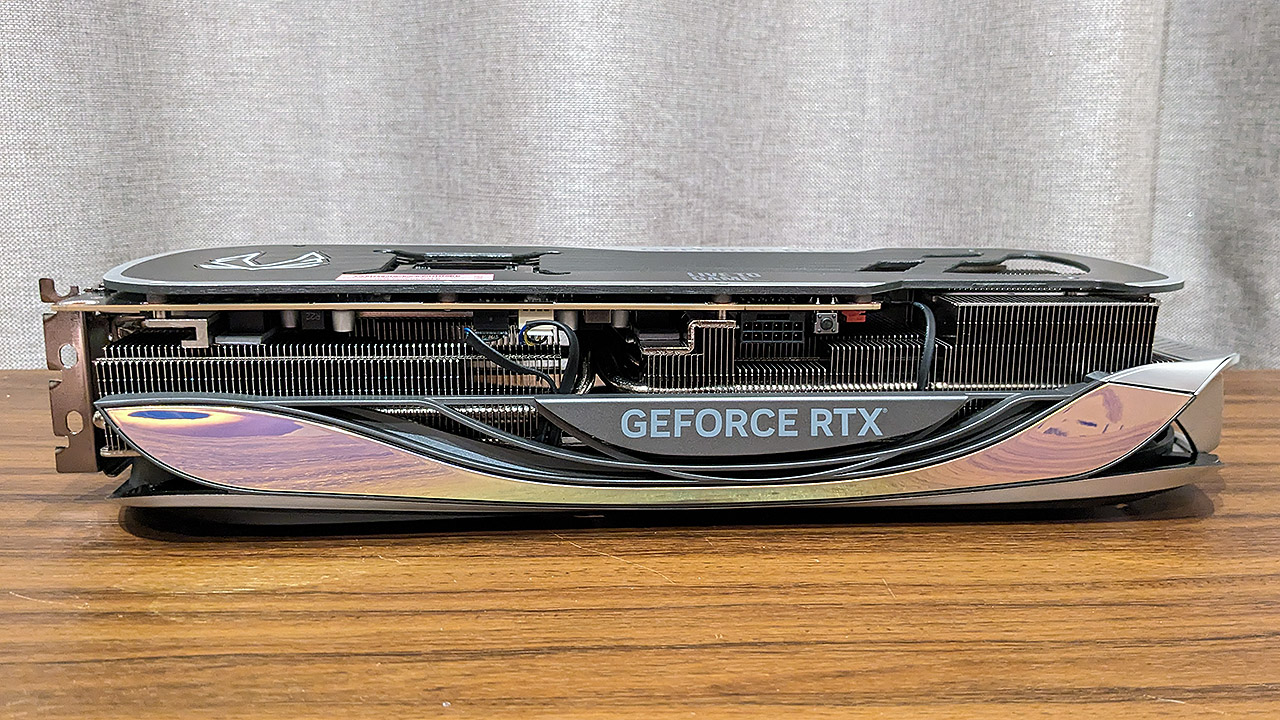
✅ You're upgrading from an RTX-20 series or older card: An upgrade from an xx80 card of yesteryear will bring you a dramatic performance uplift, not to mention the performance boosts that DLSS 3 and Frame Generation will deliver.
✅You were contemplating buying an RTX 4080: Congratulations! Your patience is set to be rewarded with a faster RTX 4080 at a cheaper price.
❌ You already have a non-Super RTX 40-series card: The Super refreshes, while welcome, aren't enough of an upgrade over non-Super counterparts to justify going out and dropping another wad of cash on one.
❌ You rate silent running very highly: The Zotac isn't what you'd call a loud card, but it doesn't achieve the awesome low noise levels we've seen (or is that heard) from the likes of MSI's Suprim or Asus ROG Strix RTX 4080s.
Zotac's RTX 4080 Super Amp Extreme Airo is a card well worth considering if you're in the market for a high end graphics card, particularly if you value ray tracing performance or want to make use of DLSS 3 and the wizardry of Frame Generation. RTX 4080 owners can skip the Super.
It's a premium card in every way. It's got a 60MHz factory overclock, a massive 3.5 slots worth of cooling capacity, a full-length metal backplate and dual BIOS. Plus, I think the RGB light bar running across the top of Zotac's IceStorm 2.0 cooler is one of the best implementations seen on any RTX 40-series card.
Operationally, the Zotac is definitely capable. It was able to maintain an average boost clock of 2,764MHz, which is well above its officially rated 2,550MHz. I compared it to one the absolute best RTX 4080 cards, in the form of MSI's Suprim, and it was consistently faster, but only by an average of 5% at 4K. That's not an exciting gain, but faster is faster, and it will appeal to those upgrading from older generation cards.
Given what we know about the RTX 4080 and RTX 4080 Super, the Zotac doesn't throw up any surprises. However, updated benchmarks with a Sapphire RX 7900 XTX Nitro+ really did surprise me. AMD's drivers have come a long way. If you don't care so much for ray tracing performance or DLSS 3, the 7900 XTX is a formidable competitor at the $1,000-ish price point.
The cooling capacity of the Zotac is very good, with a peak recorded temperature of 65°C after about 10 minutes of operation. Not bad at all for a 320W card. If there's a weakness, it's that the card is quite audible under a heavy load. It's nothing alarming by any means, but there will be better options if noise minimization is critical for you.
Zotac Gaming RTX 4080 Super Amp Extreme Airo specs
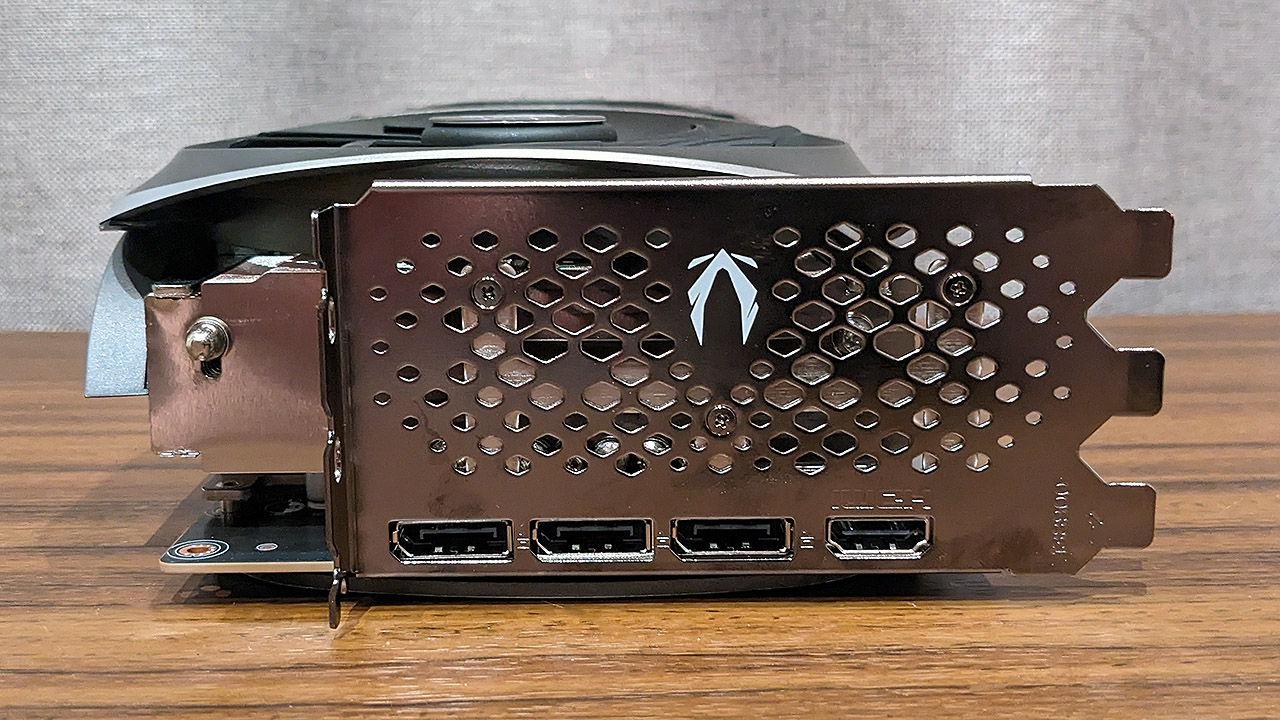
The RTX 4080 Super is essentially an RTX 4080 with a cherry on top. It includes the fully enabled AD103 GPU, with all 10,240 shaders unlocked. Nvidia's only other option would have been to make the shift up to the AD102 GPU, but it's safe to say that chip is much more likely to find its way into highly lucrative professional cards than it is an RTX 4090 Lite.
The memory system also gets a slight tweak. The RTX 4080 Super comes with the same 256-bit bus, but it gets an upgrade to 23Gbps GDDR6X memory, a small increase over the RTX 4080's 22.4Gbps memory. In bandwidth terms, that gives the RTX 4080 Super a theoretical limit of 736.3 GB/s, an increase of 19.5GB/s over the RTX 4080's 716.8 GB/s. It's better than nothing, but an AD102 with a 384-bit bus would have given it a 50% bandwidth increase instead of an insignificant 3%.
Yeah I know, it's wishful thinking.
Other than the small increases in shader count and memory clock, The Zotac Amp Extreme Airo gets a 60MHz core overclock, bringing it up to an official boost clock of 2,610MHz, though as I mentioned above, it's capable of holding well above 2,700MHz when thermal and power conditions allow it.
| Header Cell - Column 0 | RTX 4080 | RTX 4080 Super |
|---|---|---|
| GPU | AD103-300 | AD103-400 |
| CUDA cores | 9,728 | 10,240 |
| L2 cache | 64MB | 64MB |
| Memory | 16GB 22.4Gbps GDDR6X | 16GB 23Gbps GDDR6X |
| Memory bus | 256-bit | 256-bit |
| TGP | 320W | 320W |
| Release date | November 16th, 2022 | January 31st, 2024 |
| Price | $1,199 | $999 |
I did not remove the cooler but the visible components appear to be the same as those of the Zotac RTX 4080 Amp Extreme Airo, which has a powerful 24-phase VRM. Depending on how you do in the silicon lottery, you might be able to cross that 3,000MHz clock speed barrier. The card itself is a big'un, at 356mm in length and 150mm tall. It's certainly not one you'd look to use in a small form factor case.
The Zotac includes a standard complement of a single HDMI 2.1 port plus three 1.4a DisplayPorts. DP 2.0/2.1 is still missing in action on RTX 40-series cards. It's now certain we'll have to wait until the next generation to see it on Nvidia cards.
Other interesting features include an RGB header for controlling an external strip and dual BIOS with performance and quiet modes. Unusually, it's controlled by a button rather than a switch, with the change applied after a reboot.
Zotac Gaming RTX 4080 Super Amp Extreme Airo benchmarks
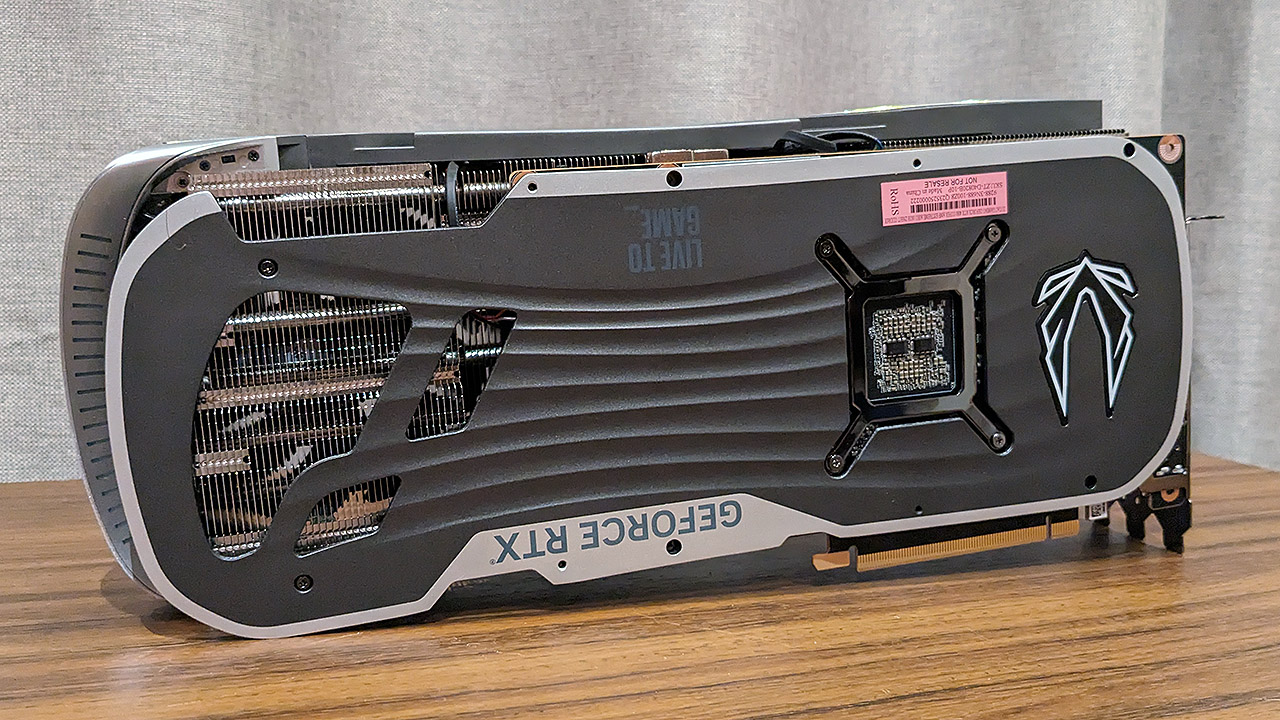
Zotac Gaming RTX 4080 Super Amp Extreme Airo performance
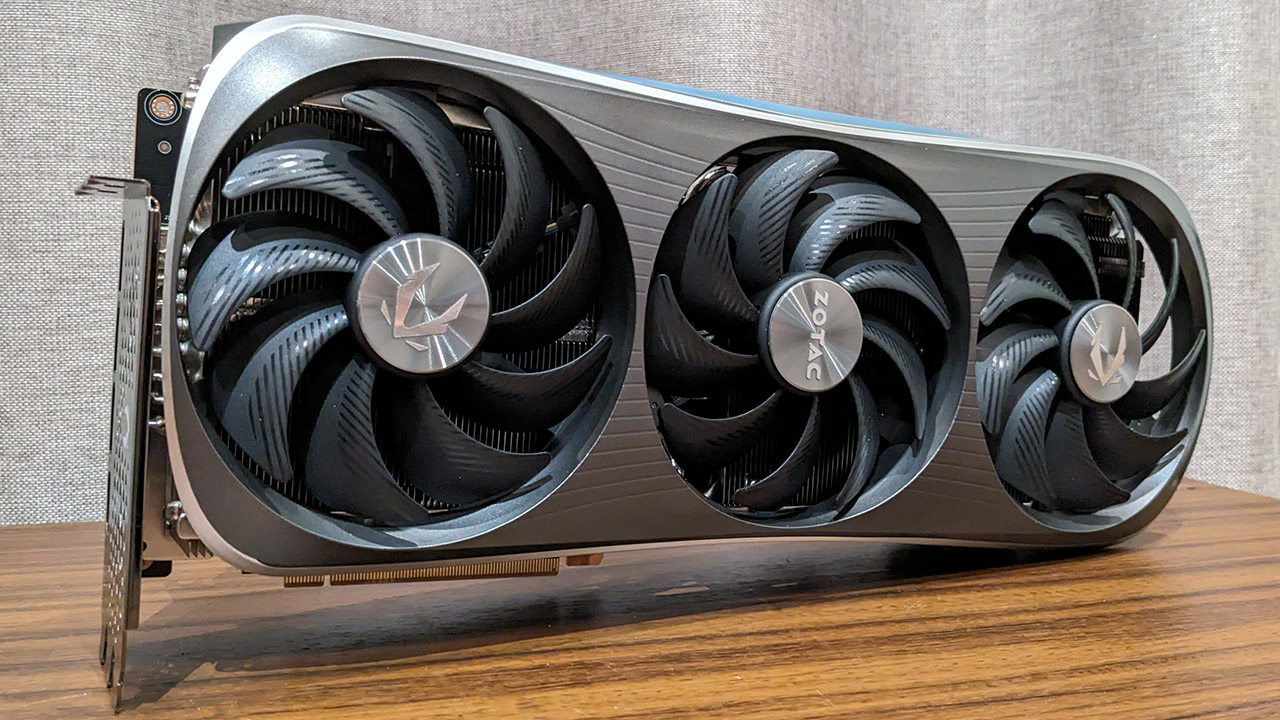
The benchmark results don't throw up any surprises, unless you're talking about the RX 7900 XTX. It's a very serious contender and it's probably the reason behind Nvidia's decision to drop the price of the RTX 4080 Super by $200. In fact, if I was given the choice between an RTX 4080 Super and a Radeon RX 7900 XTX, I'd seriously consider the Radeon option at this point in time based on its excellent raster performance.
Unless—and there's always a caveat isn't there—you rate ray tracing, DLSS 3 and Frame Generation particularly highly. They're no longer niche technologies. AMD's ecosystem still has a way to catch up.
The RTX 4080 Super is a hell of an upgrade for any user coming from any RTX 30-series card.
There will be some who consider the RTX 4080 Super to be pointless compared to the RTX 4080, and there's logic in that, but the point isn't to compare it to the RTX 4080, it's much more relevant to users of older cards. Just look at how it destroys the RTX 3080 Ti. It's 40% faster at 4K! If you take that in isolation, the RTX 4080 Super is a hell of an upgrade for any user coming from any RTX 30-series card.
The Zotac RTX 4080 Super, like the RTX 4080 before it, is quite a power efficient card for the amount of performance you get. It leaves the RTX 3080 Ti and RX 7900 XTX in its shade.
Its operating temperatures are on the impressive side too. Zotac's monstrous IceStorm 2.0 cooler is capable of handling a 450W RTX 4090, so the 320W TDP of the RTX 4080 Super presents it with no challenge. I'd like to see a few dB shave off its noise levels, but it's far from being a deal breaker.
But how does it compare to the reference-clocked Founders Edition? Well, the FE card runs cooler, quieter, and less power-hungry, too. But it also runs fairly significantly slower than this overclocked Zotac. It is worth noting, however, that big clock speed changes don't necessarily mean big frame rate deltas.
For your extra $100 you'll see performance gains of 5% on average across our 1440p benchmark suite and 3% at 4K. Those percentage numbers only result in a handful of frames per second on top of what the cheaper FE card delivers, and honestly that isn't going to feel like a tangible performance bump for your money.
Zotac Gaming RTX 4080 Super Amp Extreme Airo analysis
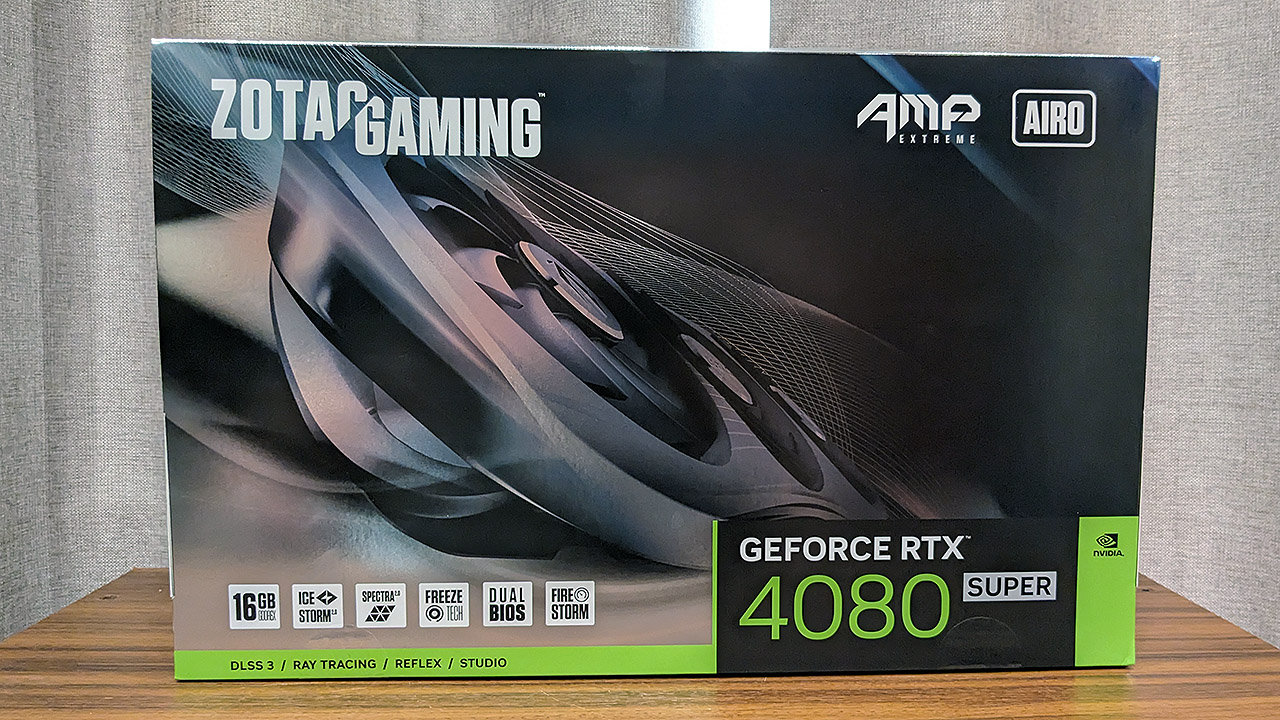
Zotac’s RTX 4080 Super Amp Extreme Airo is a capable high-end contender. I really like its curvy design and its RGB light bar looks amazing. It's a nice alternative to the typical rectangular boxy designs of modern graphics cards.
The IceStorm 2.0 Cooler keeps the card cool, and therefore enables it to maintain its highest boost clocks. Anything less would be a disappointment given its gargantuan dimensions. Its weakness is a noticeable fan level. It's definitely not noisy, but I believe Zotac could tune it a little better, even if it means sacrificing a few MHz of boost clock.
$1,099 is a lot to pay for a graphics card, though if you compare the Zotac to the base $1,199 RTX 4080's at the time of their launch, it is better value.
At the time of writing, only the US pricing was known. At $1,099 it's priced $100 more than base RTX 4080 Supers. That's less than the $200 premium Zotac wanted for its non-Super RTX 4080 Amp Extreme Airo. My understanding is that flagship tier competitors such as the MSI Suprim and Asus Strix will be priced higher than this. It's hard to say how the Zotac compares to such cards without testing them, but a $1,099 price puts it in good stead.
The Zotac RTX 4080 Super Amp Extreme Airo is fast card, with great looks (though perhaps not according to all), its very well built, and of course you get access to all of Nvidia's impressive technologies. $1,099 is a lot to pay for a graphics card, though if you compare the Zotac to the base $1,199 RTX 4080's at the time of their launch, it is better value. A faster card that's also cheaper is surely a win-win.
But it doesn't exist in a vacuum. The RTX 4080 Super is one of the less impressive members of the RTX 40-series' Ada generation. If only because I feel it's still too expensive for what it is. I presume RTX 4080 Supers will fall well under $999 in the months ahead, and if so it'll become a very solid option for a gamer that wants to build a rig and have it play every game for the next few years. Adding $100 for a cool running and high performing option like the Zotac Amp Extreme Airo, well, that's maybe a tougher sell given cheaper pricing is really what the RTX 4080 Super has going for it.
The RTX 4080 Super doesn't shock the high-end graphics market, but at this end of the range, the $100 premium of the Zotac Amp Extreme Airo is maybe an acceptable price to pay for a card with its capabilities.

Chris' gaming experiences go back to the mid-nineties when he conned his parents into buying an 'educational PC' that was conveniently overpowered to play Doom and Tie Fighter. He developed a love of extreme overclocking that destroyed his savings despite the cheaper hardware on offer via his job at a PC store. To afford more LN2 he began moonlighting as a reviewer for VR-Zone before jumping the fence to work for MSI Australia. Since then, he's gone back to journalism, enthusiastically reviewing the latest and greatest components for PC & Tech Authority, PC Powerplay and currently Australian Personal Computer magazine and PC Gamer. Chris still puts far too many hours into Borderlands 3, always striving to become a more efficient killer.
